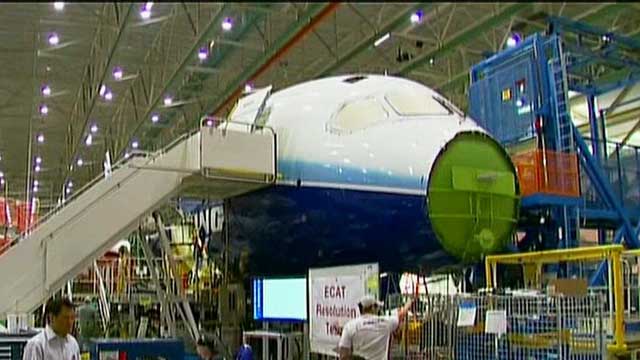Unequal unemployment? Program helps certain laid-off workers
Dan Springer reports from Seattle
Even as fewer Americans filed for jobless benefits last month, there are still 4 million Americans who are considered to be long-term unemployed. They’ve been out of work for at least six months.
But thanks to a little-known federal program that gives some workers better benefits than others, America’s unemployed are not all treated equal.
Washington state provides a tale of two workers.
Take Mike Mullins, laid off a year ago from his tech support job at the Seattle Art Institute. He’s now in a re-training program in hopes of finding work as a ship welder. His unemployment benefits will run out before he’s certified.
Meanwhile, Kiet Nguyen, an electrician who was recently laid off at Boeing, can collect unemployment pay for two and a half years.
That's because of a special unemployment benefit status created by Congress with the Trade Adjustment Assistance program, also known as TAA. Created in 1974, it gives extra benefits to people who can prove their job was outsourced to a foreign country. The program now costs taxpayers more than a billion dollars a year.
“I think it’s a good opportunity for having something that you can fall back on,” Nguyen said. “It helps you get back on your feet.”
But Mullins, a single parent who is having trouble making ends meet now, does not think it is fair.
“To hear there are people able to get two and a half years and get more training than what I’m going to get, which is a six-month program, that’s frustrating,” Mullins said.
In 2009, during the recession, President Obama extended benefits by an additional 13 weeks and threw in compensation for travel expenses for job interviews, 90 percent of moving costs and health care. The Labor Department recently approved 800 laid off Boeing machinists to join 80,000 workers in the TAA.
“It’s not a golden parachute,” spokeswoman for the International Association of Machinists Connie Kelliher said. “Nobody wants to lose their job due to jobs going overseas. It basically is a transition program that puts them into another career.”
But critics call it an expensive giveaway, mainly to unions, that does not work.
“The average person who gets training under the TAA gets one and a half years of job training,” David Muhlhausen of the Heritage Foundation said. “And for that, they earn less than similar people, they exhaust their unemployment benefits and they’re less likely to find work.”
In 2012, the program cost taxpayers $1.4 billion. According to the Heritage Foundation study, it amounted to a net negative to society of more than $53,000 per participant. But supporters say, while not cheap, it is the least the country can do for people who have lost their job to free trade.

























